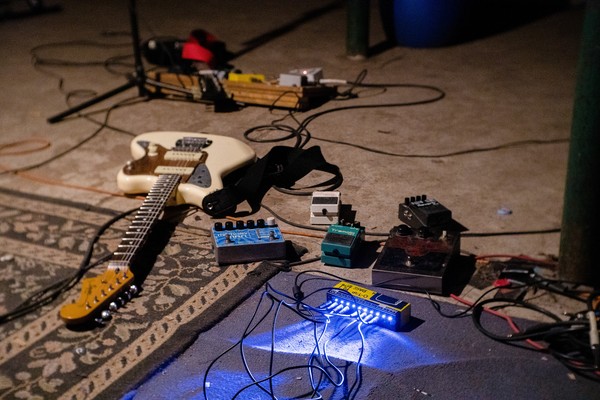Why recent music copyright lawsuits are uncalled for
THERE HAS been an onslaught of copyright disputes in the music industry as of late: Ed Sheeran’s “Thinking out Loud” allegedly copied Marvin Gaye’s “Let’s Get It On,” and previously Robin Thick and Pharrell Williams were accused of copying Gaye’s “Got to Give it Up” in their hit song “Blurred Lines.” Contemporary pop music uses a cookie-cutter style to produce catchy and popular hits. With the large volume of newly released music, songs are bound to use very similar chords merely by coincidence: this is not copying, and calling it such may risk the overall creativity of the music industry.

The anatomy of a pop song
Most pop songs use a chord progression with the major chords I, IV, V, and a minor chord such as vi or vii: major hits like Adele’s “Hello,” A-ha’s “Take on Me,” and Luis Fonsi’s “Despacito” all use this chord progression. Similarly, almost all pop songs are structured the same way: an introduction, multiple verses, a chorus, a bridge, and an outro. Artists may tweak this structure by changing the chord order or adding more complexity, but the shared template can be identified in virtually any top-charting song.
In a music copyright trial, the fundamental question is undoubtedly, “was this a copy or not?” However, case specifics most often dictate that only particular elements of the disputed songs should be examined. In this regard, Joe Bennett, a professor at the Berklee College of Music, notes that “they ask the question, ‘How similar is song B to song A,’ whereas what they should be asking is how original is song A[1].” Essentially, we must ask the question: was the element in song A unique enough to warrant song B to be labeled as “copying,” or was it rather using recurrent elements prevalent in most pop songs? Due to the musical appeal of pop structures, songs have and will continue to share many elements[1]. Merely sharing a chord progression, for example, is no grounds to sue for copyright infringement; shared musical resources should not be mistaken for an artist’s original work.
Landmark music copyright cases
Sheeran, in his Grammy award-winning song “Thinking Out Loud,” was accused of copying Gaye’s “Let’s Get It On’s” background composition by the family of the song’s late co-writer, Ed Townsend. Both songs use the same chord progression, albeit in different keys. In the courtroom, Sheeran illustrated how pop songs are so similar that he can easily transition from one tune to another while playing the guitar live; he mixed parts of his own songs with ones by Nina Simone, Stevie Wonder, and Van Morrison[1]. In May of 2023, Sheeran was found not guilty of copying “Let’s Get it On[2].”
Thicke and Williams were similarly sued by the Gaye Estate in 2013 for their song “Blurred Lines.” In March of 2015, the jury ruled that while Thicke and Williams did not directly copy “Got to Give It Up,” there was enough of a similar “feel” to warrant copyright infringement. Gaye’s heirs were awarded $7.4 million in damages, the largest amount ever granted in a music copyright case[3]. Many musicians were worried about the precedent that this ruling set, as it is dangerous to legally classify a song’s “feel”—the two songs share no melodies, chords, pitches, or lyrics. More than 200 musicians, including Hans Zimmer, signed a letter in support of Thicke and Williams during their ongoing trial in 2015[4]. This case controversially eliminated any legal standard between musical inspiration and copying. However, being influenced by other music should be encouraged and celebrated, not legally stifled.
Implications for the music industry
The “Thinking out Loud” lawsuit follows a dangerous trend of unfounded copyright infringement claims. Jennifer Jenkins, a law professor at Duke University, explains: “If... an extremely common chord progression, set to a basic harmonic rhythm, is privatized, then we are going in reverse, and we are removing essential ingredients from every songwriter’s tool kit[1].”
Part of the appeal of pop music is its simplicity and therefore accessibility for covers, remixes, or mashups. If songs must be complexified only to avoid copyright infringement, not only artists but also consumers will be negatively impacted by the impeded creativity.
While music copyright exists to protect artists from having their work copied or stolen, recent lawsuits have been moving into an alarmingly gray area that threatens the creative freedom of the music industry. Pop music enjoys a culture of shared sounds, rhythms, and atmosphere—truly original work in contemporary art is a rarity, if not impossible. To legally pursue every similar-sounding pop song is to mistake commonly shared musical building blocks with ill-intent.
[1] The New York Times
[2] BBC News
[3] Rolling Stone
[4] CBC News

